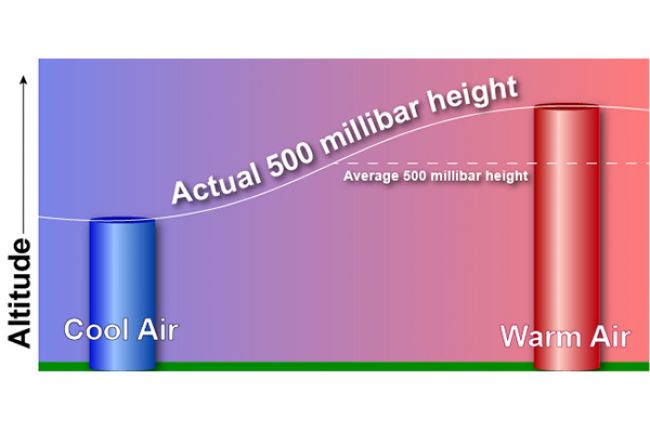
Air has weight. That idea might seem strange to you, because air seems very thin, even at sea level. Remember however, that the atmosphere extends to great altitudes. The pressure of the air is equal to the weight of a column of air above a unit area on the land surface. The column of air above a square area that is one foot on a side is about 2,116 lb., at sea level. In the metric system, that's about 10,332 kg per square meter. If you try to pump the air out of a closed container, the container will collapse inward from the outside air pressure, unless it is very strong. The reason you don't feel the air pressure is that the pressure inside your body is adjusted to be exactly the same! Air pressure decreases upward in the atmosphere. That's because at higher levels in the atmosphere there is less air above to cause the pressure.
Detailed weather maps show the atmospheric pressure by means of curved lines called isobars. As with an isotherm for temperature, an isobar connects all points with the same atmospheric pressure. There is one difference with isobars, however. The pressure at the land surface is less where the elevation of the surface is high, so the pressure is "corrected" to sea level. The corrected pressure is what you would measure at the place if you could dig a very deep mine all the way down to sea level and put your barometer at the bottom of the hole. The corrected pressure is used on weather maps.






